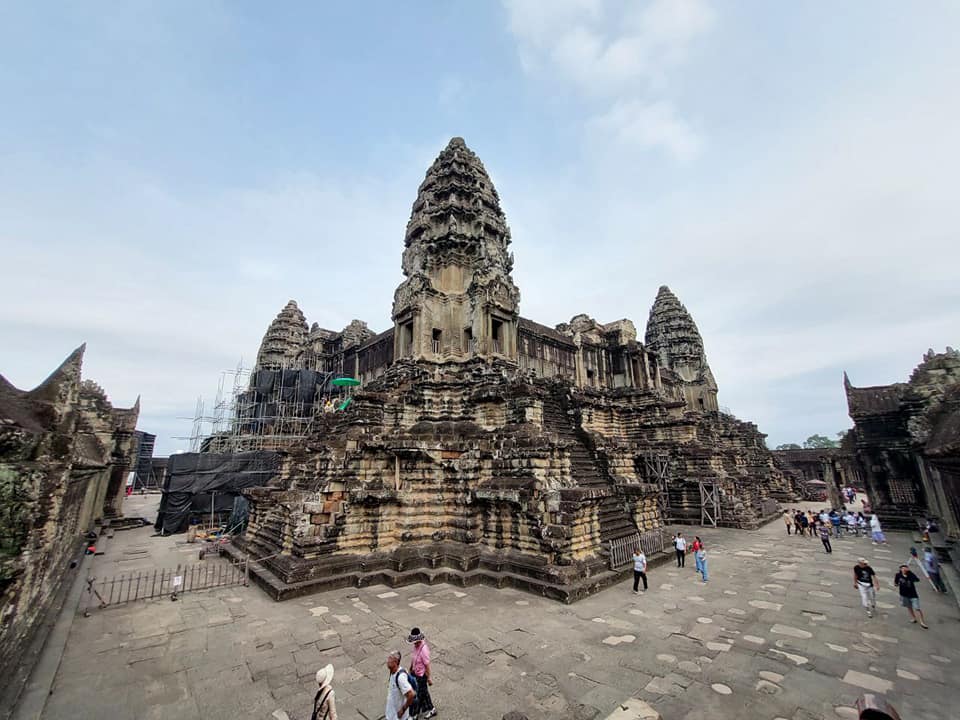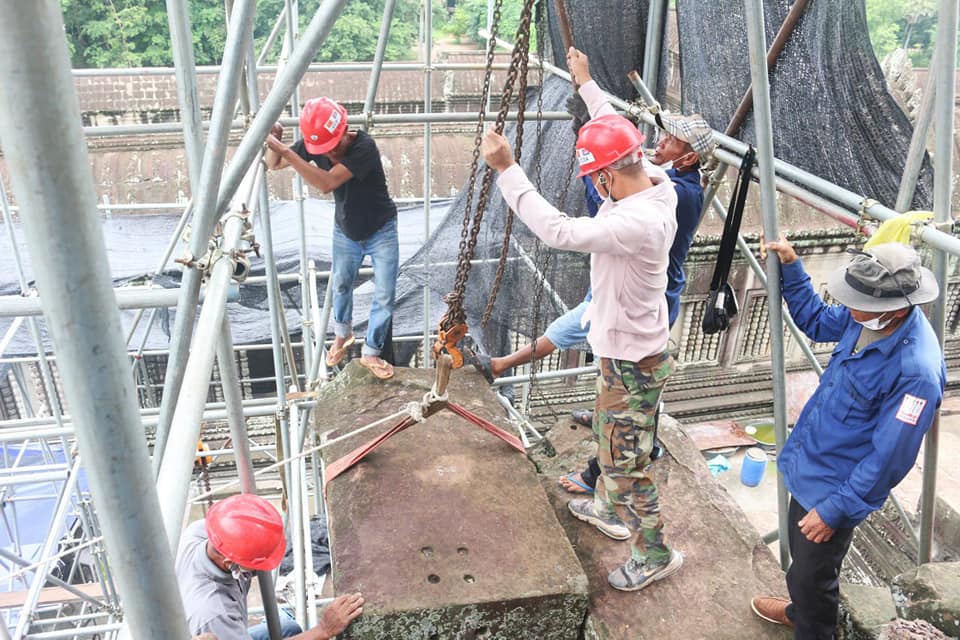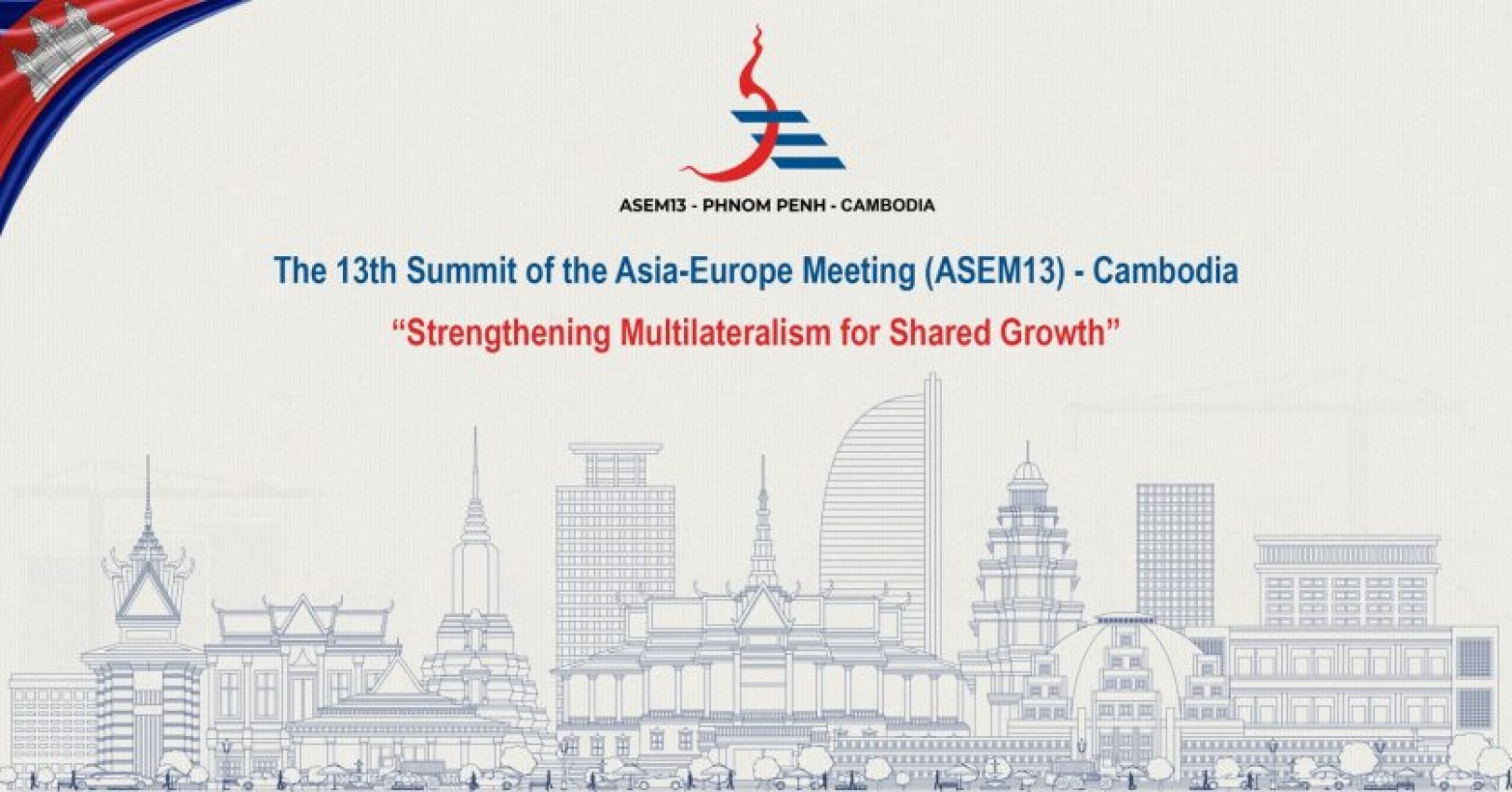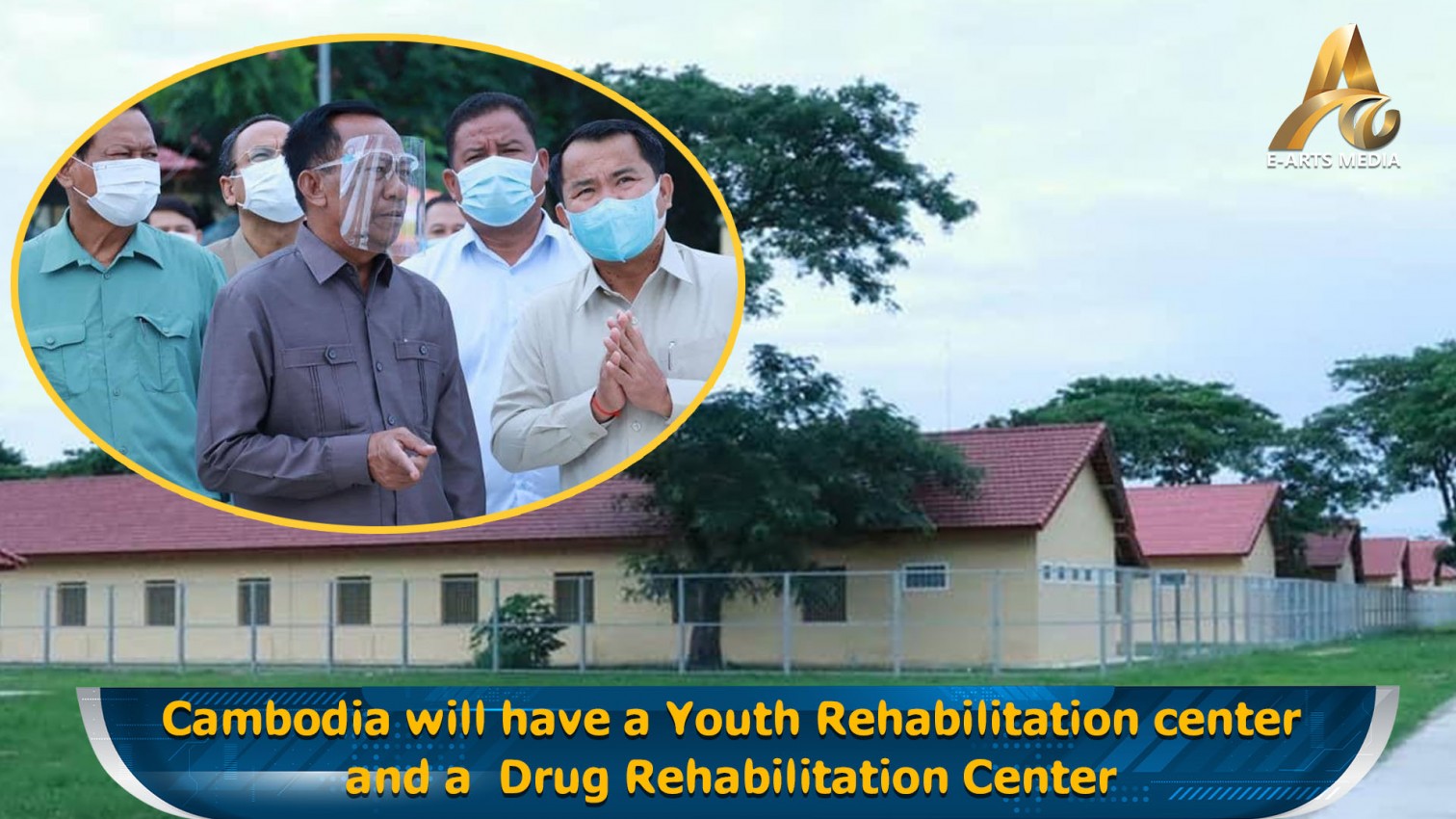ANGKOR: The Bakan Tower substructure at Angkor Wat rises 30 meters to support the five surrounding towers and give the temple complex its iconic outline. Currently, archaeologists and their hardworking technical team are repairing the Bakan’s southwest platform and reinforcing it with more modern materials like steel so it can continue its vital support role.
The stone conservation officer of the APSARA National Authority, Ro Sovandaroth, detailed the work that consists of restoring stones to their original positions, sealing the reconstructed layers from water leakage and reinforcing the foundation with stainless steel. He said that implementing about 20 stainless steel poles throughout four layers will help stabilize the stones above, adding to the structure’s longevity.
The tower has been severely damaged over the centuries by shifting stones and the wear and tear of age that erodes them. Rainwater is a major issue as it leaks through the stones and damages the foundation, causing damage to the structures integrity. The conservation team is sure to seal the stones once they are replaced or repaired to ensure minimal water damage in the future.
The APSARA National Authority’s conservation efforts have achieved great results for one of the most important archeological sites in Southeast Asia. In 2004, the property was removed from the World Heritage in danger List and their work continues to preserve Khmer cultural history while learning more about it every year.



























